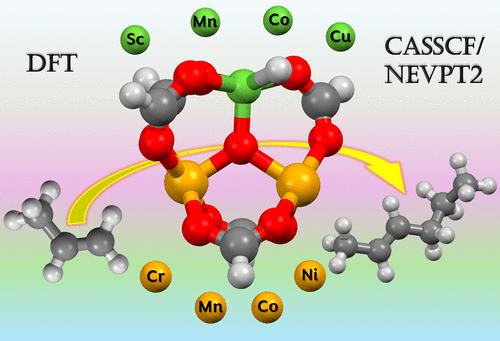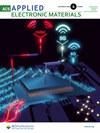Exploring the Computational Aspects of Propylene Oligomerization Catalysis Using M′2M Type Trimetallic MOF Nodes
IF 4.3
3区 材料科学
Q1 ENGINEERING, ELECTRICAL & ELECTRONIC
引用次数: 0
Abstract
Metal–organic frameworks have emerged as promising materials in the field of catalysis. They offer an optimal ground for screening catalysts and tailoring their catalytic properties. In this work, via density functional theory (DFT) calculations, we investigated the catalytic activity of the trimetallic MOF nodes, M′2M for propylene oligomerization, by varying the active metal M from Sc to Cu with M′ being Fe, aiming to grasp the impact of altering the active atoms on the catalyst’s activity. Additionally, we examined how substituting the spectator atom, M′, with other transition metals, i.e., from Sc to Cu, affects these energy barriers, keeping Ni as the active metal. We proposed several cases with lower or comparable energy barriers to the experimentally reported Fe2Ni trimetallic MOF node. In addition, we found a correlative relationship between spin-density from natural population analysis and energy barriers in the realm of C–C bond formation, whereby an elevation in spin-density is found to be inversely proportional to the magnitude of the energy barriers. Moreover, we calculated the energy barriers for C–C coupling and β-hydride elimination using multireference NEVPT2 calculations on top of the CASSCF wave function to validate the rate-determining step that is predicted by DFT.

利用 M′2M 型三金属 MOF 节点探索丙烯低聚催化的计算问题
金属有机框架已成为催化领域前景广阔的材料。它们为筛选催化剂和定制其催化特性提供了一个最佳平台。在这项工作中,我们通过密度泛函理论(DFT)计算,研究了三金属 MOF 节点 M′2M 在丙烯低聚过程中的催化活性,方法是将活性金属 M 从 Sc 改为 Cu,M′为 Fe,旨在掌握改变活性原子对催化剂活性的影响。此外,我们还研究了在保持 Ni 为活性金属的情况下,用其他过渡金属替代旁观原子 M′(即从 Sc 到 Cu)对这些能垒的影响。我们提出了几种能垒较低或与实验报告的 Fe2Ni 三金属 MOF 节点能垒相当的情况。此外,我们还从自然种群分析中发现了自旋密度与 C-C 键形成领域的能垒之间的相关关系,即自旋密度的增加与能垒的大小成反比。此外,我们还在 CASSCF 波函数的基础上使用多参量 NEVPT2 计算方法计算了 C-C 耦合和 β-酐消除的能垒,以验证 DFT 预测的速率决定步骤。
本文章由计算机程序翻译,如有差异,请以英文原文为准。
求助全文
约1分钟内获得全文
求助全文

 求助内容:
求助内容: 应助结果提醒方式:
应助结果提醒方式:


